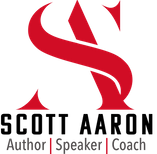In today’s fast-paced and competitive landscape, establishing yourself as a leader in your industry is essential for unlocking your business’s full potential.
This newsletter will break down the essential steps to position yourself as an authority, build trust with your audience, and distinguish yourself from competitors.
Understanding Business Authority
Business authority is more than just being recognized; it’s about being trusted as a go-to resource in your field.
This trust is what sets you apart from competitors and keeps your audience returning for more.
Authority creates a sense of reliability and credibility, which can significantly impact your business’s success.
Let’s jump into some actionable steps to build your authority on LinkedIn.
1. Identify and Focus on Your Niche and Ideal Client on LinkedIn
The first step in establishing your authority is to clearly define your niche.
Understanding your ideal client allows you to tailor your messaging, making your content relevant and engaging.

Takeaway:
A well-defined niche not only positions you as an expert but also helps you attract and retain your target audience. It creates a focused approach to your content, making it easier for potential clients to see your value.
Action Step:
Conduct thorough research to identify the specific needs, challenges, and interests of your ideal client. Use LinkedIn’s advanced search features to find relevant groups, discussions, and profiles. Engage in conversations to gain insights into their pain points and preferences.
- Tip: Create a buyer persona that outlines your ideal client’s demographics, goals, challenges, and preferred content types.
Accountability Step:
Set a deadline to complete this research within one week. Share your findings with a mentor or colleague for feedback and validation. Use their insights to refine your niche further.
2. Build High-Quality, Valuable Content for Your Network on LinkedIn
Creating and sharing high-quality, valuable content is crucial for establishing yourself as a thought leader. Your content should not only address the needs of your audience but also provide actionable insights that they can implement.




Takeaway:
Regularly posting valuable content positions you as an authority and fosters trust and engagement from your audience. It demonstrates your expertise and commitment to providing real value.
Action Step:
Develop a content calendar for the next month, planning topics that align with your audience’s interests. Aim for a mix of content types, such as articles, posts, videos, and infographics, to diversify engagement.
- Tip: Consider using tools like Canva for graphics or scheduling tools like LinkedIn’s scheduler to plan and automate your posts.
Accountability Step:
Share your content calendar with a peer for feedback and schedule weekly check-ins to discuss progress. Set specific goals for engagement metrics (likes, comments, shares) for each piece of content.
3. Leverage Social Proof and Thought Leadership by Gathering LinkedIn Recommendations

Social proof is a powerful tool in building trust and credibility. Recommendations from clients and colleagues enhance your reputation and showcase your expertise.
Takeaway:
Testimonials and endorsements serve as social proof, reinforcing your authority and attracting new clients. They provide potential clients with the reassurance that others have benefited from your services.
Action Step:
Reach out to past clients or colleagues and request a recommendation that highlights specific outcomes from your work. Provide them with context or bullet points to guide them in writing their recommendation.
- Tip: Consider offering to write a draft for them to make it easier, which they can then modify as they see fit.
Accountability Step:
Set a goal to collect at least three new recommendations within the next month. Follow up with those you contacted regularly to ensure you stay on track. Keep a spreadsheet to track who you’ve contacted and their responses.
4. Optimize Your LinkedIn Profile for Your Online Presence
A polished LinkedIn profile is essential for making a strong first impression. It should communicate your expertise, value proposition, and professional brand.



Takeaway:
An optimized profile increases your visibility and makes it easier for your audience to understand your offerings. Your profile acts as your digital business card and should reflect your professional persona.
Action Step:
Review and update each section of your LinkedIn profile, including your headline, summary, experience, and skills. Incorporate relevant keywords that resonate with your niche to improve searchability.
- Tip: Use bullet points in your experience section to highlight achievements and quantifiable results, making your profile more impactful.
Accountability Step:
Set a deadline to complete your profile optimization within two weeks. Share your updated profile with a trusted colleague for feedback. Schedule a follow-up with them after a week to discuss any changes or improvements.
Establishing expert authority is a journey, not a sprint. It requires consistency, a deep understanding of your audience, and a commitment to providing real value.
By following these actionable steps, you can position yourself as a leader in your field and unlock the full potential of your business.
What was your biggest takeaway from this week’s newsletter?
Join The LinkedIn Leads for Life Facebook Group Here: https://www.facebook.com/groups/284573162152150
It is a community of support, tips, and more for generating leads using LinkedIn! or
What was your biggest takeaway from this week’s newsletter?
#expert #authority #linkedin
